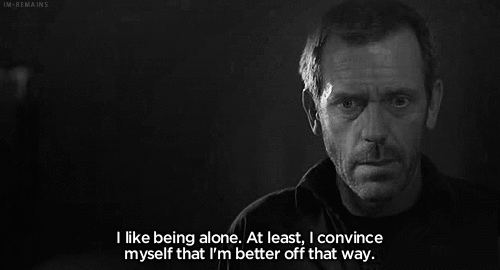
"'Fool' for a Health Minister" reads the headline splashed across the front page of the Toronto Sun on Nov. 1, 2015.
The Wynne government has certainly made more than its share of foolish mistakes. Refusing to grant physicians binding arbitration is arguably their biggest. It is ridiculous that Health Minister Hoskins meets with the Ontario Medical Association giving the false impression of negotiation, but he won't actually permit physicians the one thing that will settle this messy war.
For essential services workers who cannot strike, binding arbitration enforces a compromise between the two opposing parties. It is a common clause in labour disputes. Physicians don't have it; and apparently the Wynne government will go to great lengths to avoid granting it. They will even go so far as to force taxpayers to waste millions of dollars defending against a charter challenge.
In the meantime, they haphazardly slash physician fees and twist facts to perpetuate political spin. In a sound byte tinged with desperation, Hoskins blindly insists that the recent cuts to physician pay do not impact patient care.
And all around him clinics close, doctors leave and patients suffer.
How will he explain the alarming number of clinics, both family medicine and specialist, forced to shut down in the past month? If physicians are so wildly rich, how is it that their profit margins are so narrow that a mere seven per cent cut is closing clinic doors?
A Facebook forum of Concerned Ontario Doctors has tracked these closures since October 1. And as each week passes, more offices close, more patients find themselves without a family physician. Access to fewer and fewer physicians creates a bottleneck where patients suffer and may die trapped in ever-increasing wait times.
Case in point: the 50 per cent reduction in pay for the urine drug screen (UDS), G040, a simple diagnostic test that monitors complications and compliance with therapy among patients on methadone maintenance treatment. The UDS is a standard of care in addiction medicine. It pays the rent for addiction clinics in Ontario. On October 1, one single fee cut chopped revenue that finances community addiction clinics by 25 per cent. As a direct result, one-third of addiction specialists across Ontario are no longer able to keep these community clinics afloat.
Patients suffering from opioid addiction form a small subset of the general population. Methadone clinics in smaller towns might only care for 60 to 80 patients. But for this small group, these programs are often a life-saving service. Addiction as a disease not only has a huge impact on personal health, it carries with it an immense social burden. Our taxes are supposed to provide care for vulnerable groups like these patients.
Consider this: if untreated, each patient with an opioid use disorder costs taxpayers $40,000 to 50,000 per year. Treatment in a government-subsidized rehabilitation facility is $20,000 per year. In sharp contrast, patients monitored and care for via community-based methadone clinics cost the people of Ontario $6,000 per year. How does it make any financial sense to target these clinics?
Bottom line: enrolling patients in an addiction clinic saves the Ontario government money. More importantly, patients receive gold standard care locally so that they can return to a productive life -- holding down jobs, providing for their families and giving back to society. Community-based addiction clinics are by far the cheapest and most humane way to manage the growing problem of opioid addiction.
Before the cuts, Ontario prided itself on having one of the best addiction programs in Canada. Wait times in other provinces drag on for over a year, during which taxpayers assume the terrible cost of untreated patients languishing on that wait list. The sole reason for this disparity: the UDS in Ontario was paid at $30 instead of $15.
So, exactly how much money is the Liberal government saving from cutting the UDS fee? It must be monumental given that slashing that one physician service fee has compelled three addiction clinics to close in the span of one month. In a methadone maintenance program, patients have to provide one supervised UDS per week. At $15 per sample tested, the government is now saving a whopping $780 per year. In exchange, that opioid disorder patient now has three options:
- Go to another addiction centre -- difficult if they live in a small town.
- Stop methadone maintenance treatment and relapse. Apart from the incredible tragedy of a young life that is now wasted, the cost to taxpayers skyrockets to $40,000 per patient per year representing Emergency Department visits, hospitalizations, incarcerations and social assistance.
- Hope to get into a residential treatment program that costs taxpayers $20,000 per year.
Hoskins has chosen to save taxpayers $780 so that he can shell out $20,000 to 40,000 of their hard-earned dollars instead. That is the definition of a "fool."
How hard do you work for your money? I know I work long hours and sacrifice many family commitments to earn my income. So the thought that the government is wasting my hard-earned tax dollars on decisions like this is infuriating.
What could the Ontario Liberals have done instead? If they had worked with the front-line physicians in these clinics, they would have been advised to increase the monthly maintenance code while decreasing the UDS. That would save money and protect patients.
Another option: use LHIN (Local Health Integration Network) funding to subsidize the cost of staff at the clinic so that it's no longer shouldered by physicians alone. Then a decreased UDS would not force a clinic closure.
Hoskins took the easy road: across-the-board fee cuts to control the physician services budget. But the price tag for meeting budgetary constraints now includes severely limiting access to care, abandoning patient welfare and wasting millions of taxpayer dollars.
I love being an Ontarian. But I am tired of a government who only speaks a language of threats, ultimatums and bullheaded decisions. I want a government that holds itself accountable. I want a government that plays fair. I want a government that actually partners with its constituents to develop fiscally sustainable solutions that are responsible, fair and no longer victim to the ravages of one election cycle.
MORE ON HUFFPOST:
